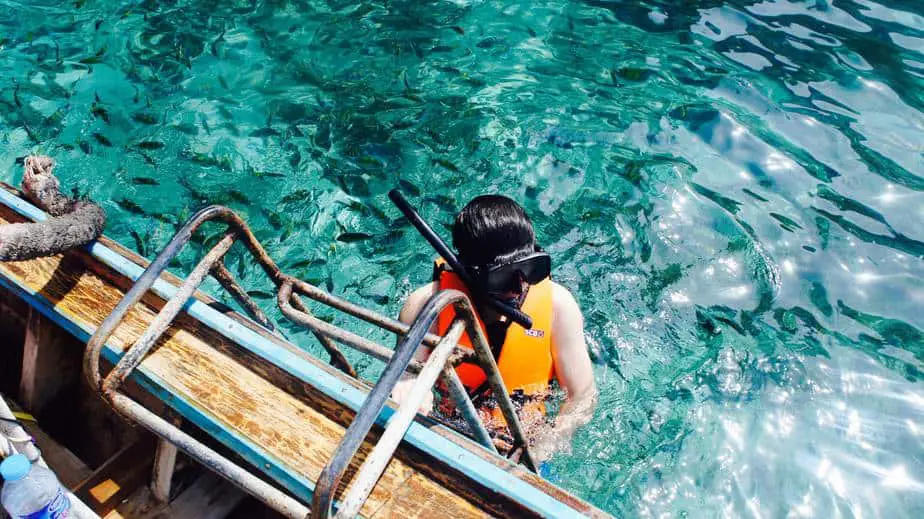If you’re thinking about snorkeling for the first time, you might have some questions, concerns, or even fears. You might know how to swim a little bit, but you wouldn’t consider yourself a strong swimmer. Can you still safely go snorkeling? Thankfully, the answer is yes. You do not need to be a seasoned athlete just to be able to snorkel. The next time you go on vacation, don’t be afraid to try snorkeling out.
Is snorkeling safe for non-swimmers? Absolutely! Chances are, you are snorkeling as part of a boat tour, meaning you will be with other snorkelers and a guide. The guide will give you instructions on how to snorkel and will provide you with life vests to help you stay afloat. Ideally, you should still have some swimming ability, however you can rely on a flotation device to help you preserve energy. You should also wear a rash guard, swim shirt, or a wetsuit, and use sunscreen as well. By doing all of this, you will be extremely safe.
Do not worry about being a strong swimmer. Even seasoned snorkelers will rely on a flotation device to help them conserve energy. Otherwise, there’s no way one could tread water for 45 minutes without exhausting themselves. Also, as long as you are with others and remain close to the boat, you can get to safety or call for help really easily if you need to. Let’s go over why snorkeling is a completely safe activity even if you’re a non-swimmer.
Can I snorkel without a tour guide?
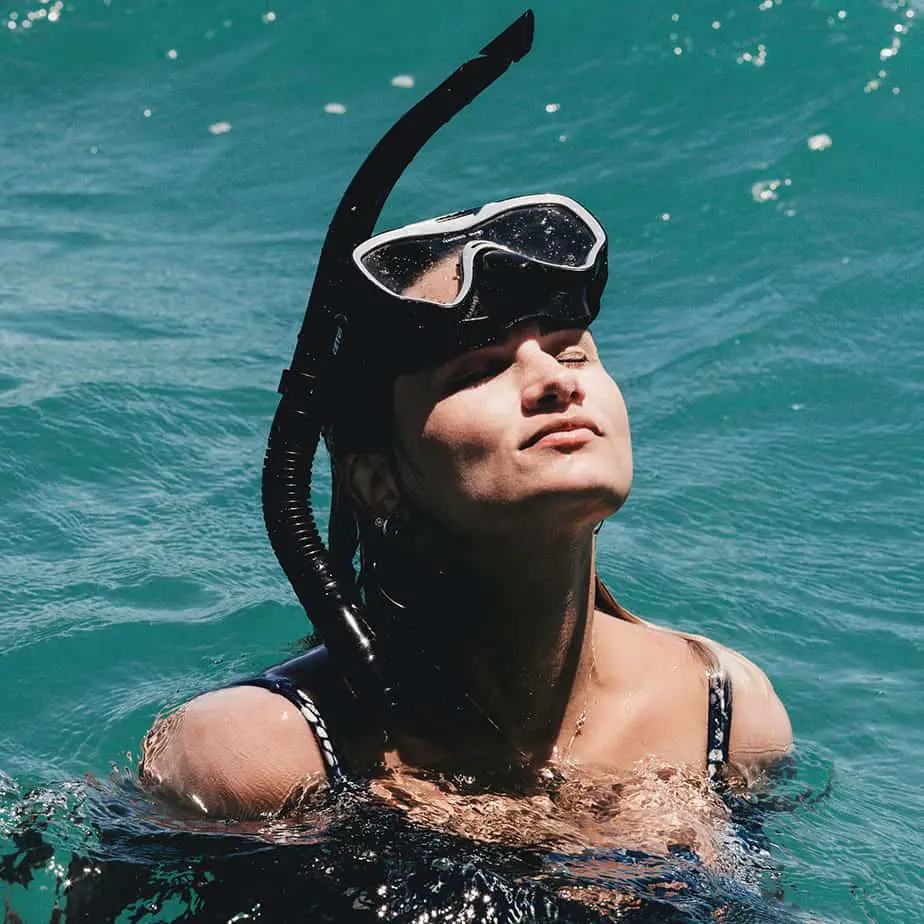
Yes, you can snorkel without a guide. You do not need to be part of any snorkel tours, however we highly recommend going with one if you haven’t snorkeled before. Having an experienced guide take you through the process and keep a watchful eye on you will greatly reduce your anxiety and give you peace of mind.
By going with a snorkel boat tour, you can get a feel for what snorkeling is like in general. They will take care of everything for you. Unless they state otherwise, they’ll provide you with all of the gear: mask, snorkel, fins, life vest, and so on. The crew will help you get the right fitting so you won’t have a loose mask or snorkel.
If you don’t even know how to snorkel, they will guide you through the whole process of how to snorkel as well: you’ll learn how to clear the mask, how to clear the snorkel, how to do a frog kick, how to breathe through a snorkel, and so on.
Seriously, if you have any questions or concerns, they will help you through all of it. Just by joining a snorkeling excursion even one time, you will learn so much about snorkeling that you can have the confidence to do it yourself next time.
Packing for your first time snorkeling
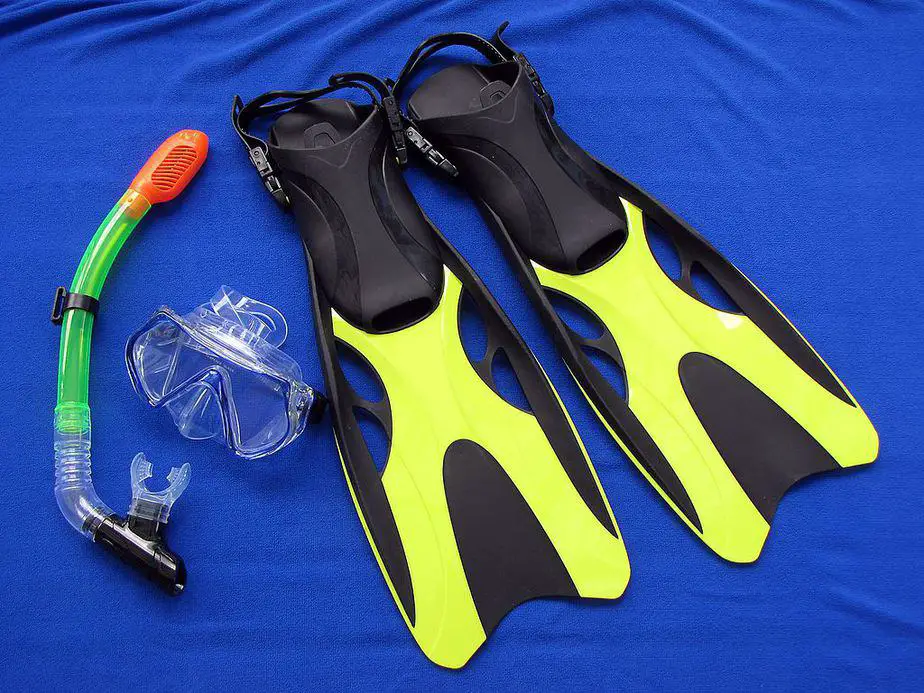
In this section, we’ll go over what basic snorkeling equipment you should have and how they will help keep you safe as a non-swimmer.
Essentials
- Reef-safe sunscreen: Do not underestimate how much damage the sun can do to you. The sun will not only cause sunburn, but its harmful UV rays can also cause your skin to age faster and increase your chances of skin cancer. Since you’ll be snorkeling, your backside will spend a lot of time exposed to the sun, meaning your neck, ears, back, and whatever other exposed body part will bear the brunt of the UV rays. Look for a reef-safe sunscreen that has a minimum rating of SPF-15 and is waterproof. This means it will last longer without you needing to reapply it every 30 minutes.
- Hair ties: If you have long hair, tie it up! Don’t let it flow like you’re Ariel from The Little Mermaid; a few strands might get stuck between your mask skirt and skin and cause a leak. Plus, it’s legitimately a hazard if it gets caught on something or obstructs your vision. An easy way to tie your hair is to first tie it up like a pony tail, then put another hair tie an inch below the first, then another an inch below the second, and so on, until your hair is in a neat bundle. Look for hair ties with a fabric-like coating so it won’t end up in a knot disaster. You should also be mindful of good hair care so you don’t end up with hair that looks like a dried-up bird’s nest afterwards.
Important items that can be rented/provided for
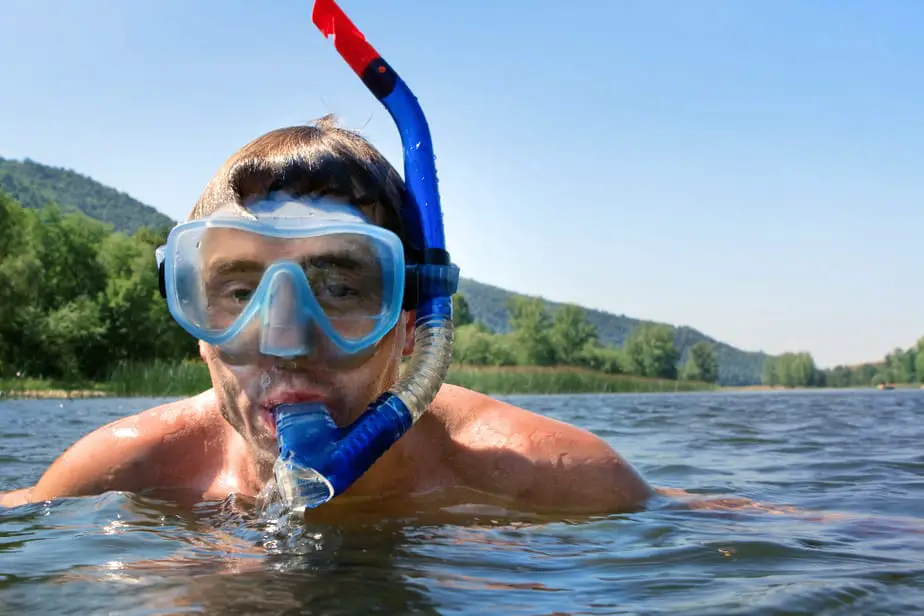
The following items you can either bring your own or rent them, or they may be provided to you as part of the tour. What’s very important for safety is that they fit you properly. If you’re part of a tour or renting from a resort, then an employee can help you get the right fit.
The “right” fit just means: that mask doesn’t leak and the straps aren’t digging into your head, the snorkel mouthpiece isn’t causing you any jaw pain or discomfort, the fins aren’t rubbing painfully against your skin, and so on. In the bullet points below, we are already assuming the gear fits well. Ill-fitting equipment is a safety concern, particularly if you’re inexperienced with snorkeling.
- Mask: The snorkel mask is like your window to the underwater world. It’s what allows you to keep your eyes wide open underwater, but that assumes it fits you right, doesn’t leak, and doesn’t constantly fog over. There are two types of masks: a traditional mask and a full face mask. They both work, it just depends on which one you prefer. The most important part is that it fits your face nicely and snugly. If water manages to enter, you need to stay calm and clear the water out. Learn how to get real good at that because it will certainly happen, and if you panic, you are compromising your safety.
- Snorkel: Just as important as the mask is the snorkel. It’s what allows you to breathe underwater, so without either the mask or snorkel, you can’t really go snorkeling. In a traditional snorkel mask setup, the snorkel attaches to the mask whereas in a full face mask, the snorkel is built into the mask. If you’re just starting out, you don’t want to end up swallowing water accidentally, so we recommend you get a dry snorkel. Dry snorkels are designed to keep water out, and any water that manages to get in will be collected in a reservoir and purged through a one-way valve. In other words, your snorkel will stay dry, and you can have peace of mind.
- Fins: There are many types to choose from: long fins or short fins, split fins or paddle fins. To be honest, for recreational snorkeling, it doesn’t matter; having fins at all is better than nothing. The purpose of fins is to help your legs generate more thrust and propel you further with less effort per kick. As long as they fit you and don’t rub painfully against your skin, they are decent enough. The material that fins are made of is slightly buoyant, meaning it will help you stay afloat more easily. Once your flippers are on, be very careful not to trip over them when walking. You should put them on at the last possible moment so you don’t need to walk in them very far.
- Flotation device: This is the secret weapon for non-swimmers, and why it is still possible for someone who isn’t a strong swimmer to snorkel for a long time. There are many types of buoyancy devices, but the best ones are life vests and snorkel vests. Even seasoned snorkelers use a buoyancy aid; they aren’t something to be embarrassed about! Their purpose is to help you conserve energy so you can stay in the water for 45 minutes, and if you happen to be a non-swimmer, well, they can save your life. Always ask if there are life vests or snorkel vests available; they are what make snorkeling safe for non-swimmers!
- Exposure suit (swim shirt, rash vest, wetsuit): Unless you want to lather your whole body with sunscreen every hour, you should cover up as much of your skin with protective swim clothing to save on sunscreen. In other words, the clothing you wear must have a UPF rating, meaning it blocks the sun’s UV rays. The most common choice is to wear a full rash guard or a full wetsuit. The benefit of wearing an exposure suit is that it’s like a second skin. You can get additional protection from scratches and jellyfish stings. In the case of a wetsuit, it will also keep you warm and provide you even more buoyancy. If you don’t plan on snorkeling often you can just rely on sunscreen for UV ray protection, but the insulation a wetsuit provides is hard to say no to.
Is swimming required for snorkeling?
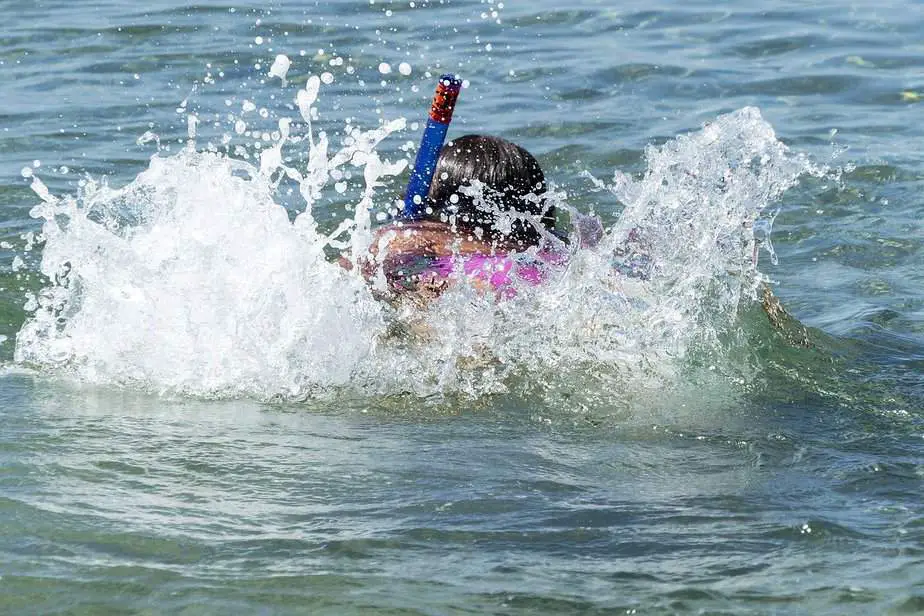
We think that it’s ideal if you know how to swim, but you do not have to be a strong swimmer in order to go snorkeling. Heck, if you are part of a boat tour and you are with a group of people, with guides watching over you, and you’re wearing a life vest, then you might not even need to know how to swim at all. However, knowing how to swim will reduce your anxiety and improve the snorkeling experience, so we still recommend taking some swim lessons if you completely don’t know how to swim.
How to safely snorkel as a non-swimmer
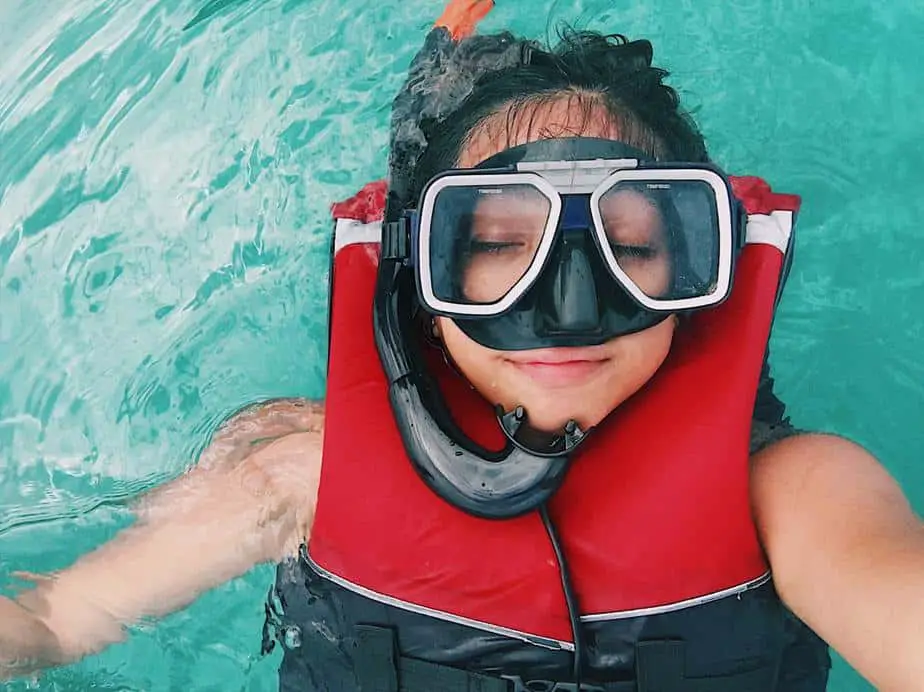
Can you safely snorkel without being able to swim? Yes. It happens all the time. Snorkeling is a surface sport, and it can also be done in shallow waters if you want. You don’t even need to fully submerge, so you’re close to the surface (and fresh air) at all times. I’ve seen extremely young kids and the elderly successfully snorkel, and I believe you can too.
We’ve discussed a lot about snorkel gear but we haven’t yet talked about the actual experience of snorkeling other than, “The tour guide will help you”, so if knowing these things in advance can help you have a better experience, then here are a few tips to hopefully make snorkeling much more fun and safe for you.
Snorkeling from shore vs. a boat
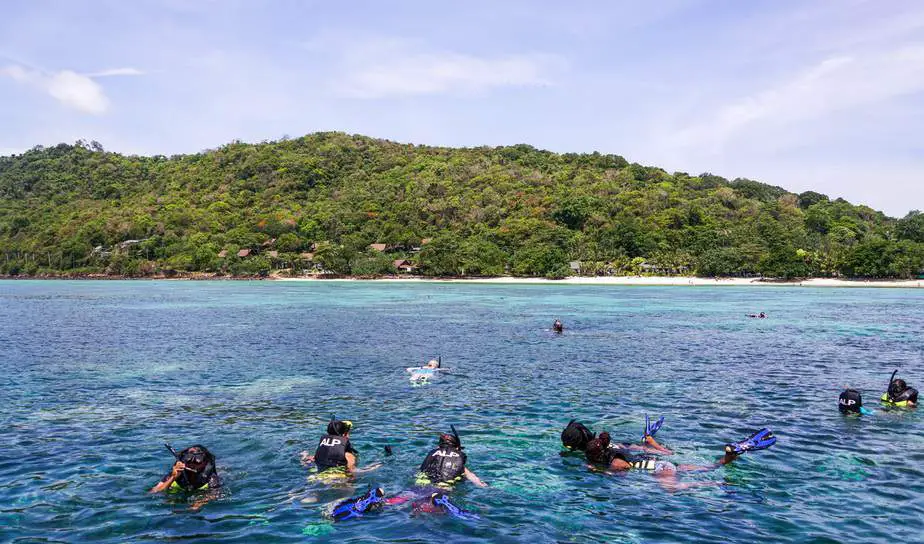
Snorkeling can be done by the shore or in open water from a boat. Is it safer to be in shallower waters if it’s your first time? Not necessarily. People can drown in shallow water all the same. Plus, riptides can pull away from shallow waters. Basically, if you’re alone, it’s not any safer than being in deep water.
It is a good idea to test out your snorkeling gear in shallow water just to get used to it. However, the marine life near the shore and the sights you can see pale in comparison to the open waters in my opinion. If you snorkel near the shore, chances are you’ll be underwhelmed and not think very highly of snorkeling.
Instead, you should sign up for a snorkeling trip that will take you to the most renowned and beautiful destinations that are only accessible by boat. This ensures you will be taken to a great spot, you are receiving help and advice from qualified instructors, and the presence of other snorkelers means someone can bail you out of a tough situation (or at least call for help).
Understand your gear
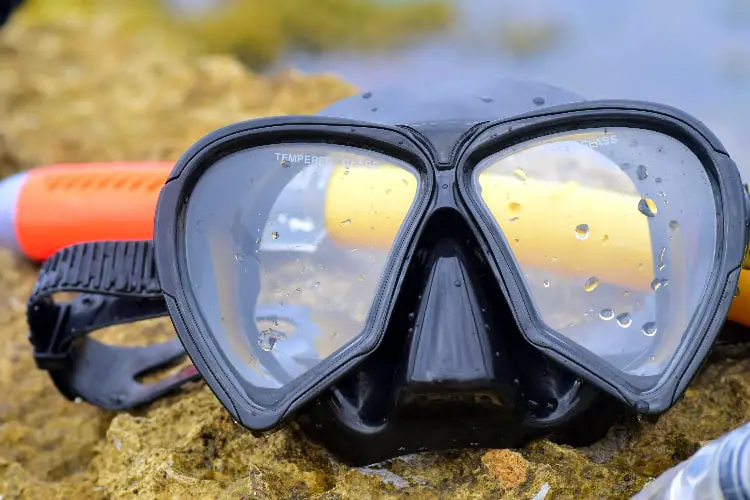
If you’re on a snorkel tour, chances are the captain/guide will ask the group if anyone is not a strong swimmer. Chances are, there are at least a few people, if not the majority. These people will be provided a flotation device, typically a life vest. If you have not been given one, try asking for one.
With a life jacket strapped around your waist (not worn like a jacket), it becomes virtually impossible to drown. If you’re wearing a wetsuit on top of that, you will be even more buoyant. For even more insurance, why not let the guide know that you’re not confident in the water and you’d like it if they kept a watchful eye on you? With all of these boxes ticked, snorkeling can be safe even for a non-swimmer.
Next, let’s talk a bit more about gear that we haven’t already covered in the packing section. When it comes to how the gear should fit, if you find that it either fits too loose or too tight, opt for the latter. Equipment that is too tight will feel uncomfortable, but it will at least stay on you. A loose mask will let water in and possibly slide off your face. Loose fins will slip off your feet, a loose snorkel will be hard to keep in your mouth, etc.
Are you used to breathing through your nose? Unless you have a full face mask, snorkeling requires you to breathe with your mouth through the snorkel. The snorkel mask will fit over your eyes and nose. If you try to inhale with your nose, you will not get any fresh air. The mask strap should sit below the broadest part at the back of your head. It should be tight enough to prevent water from entering, but not so tight that it literally digs into your skin.
If the mask relies heavily on the strap to seal against your face, it means the fit is bad. The silicone skirt should suction onto your face naturally. Maybe your face is small and narrow, and the mask is too large? In that case, look for a narrower mask that fits your facial structure.
A way to test for a good fit is if the mask can stay against your face without the assistance of a strap as long as you’re inhaling through the nose. Assuming the seal is tight, you should be vacuuming the mask to your face. That means you have found a good fit and the strap should only gently wrap around your head.
Let’s move on to the snorkel. Snorkels have a mouthpiece that you place in your mouth. If you’re renting, it might freak you out that many people have placed their mouths here. Cross your fingers that it has been properly sanitized. However, millions of people have rented gear and survived, and you will too. In a post COVID-19 world, hopefully the standards of sanitation will have increased even further.
With the mouthpiece in your mouth, bite down into the indentation to keep the snorkel in place. Ideally, the mouthpiece will form a mould around your teeth, and you should be able to breathe through it without opening your mouth. Your lips and this indentation should keep the water from entering your mouth. Do not bite down too hard; you will experience jaw pain after you’re done.
Stay calm
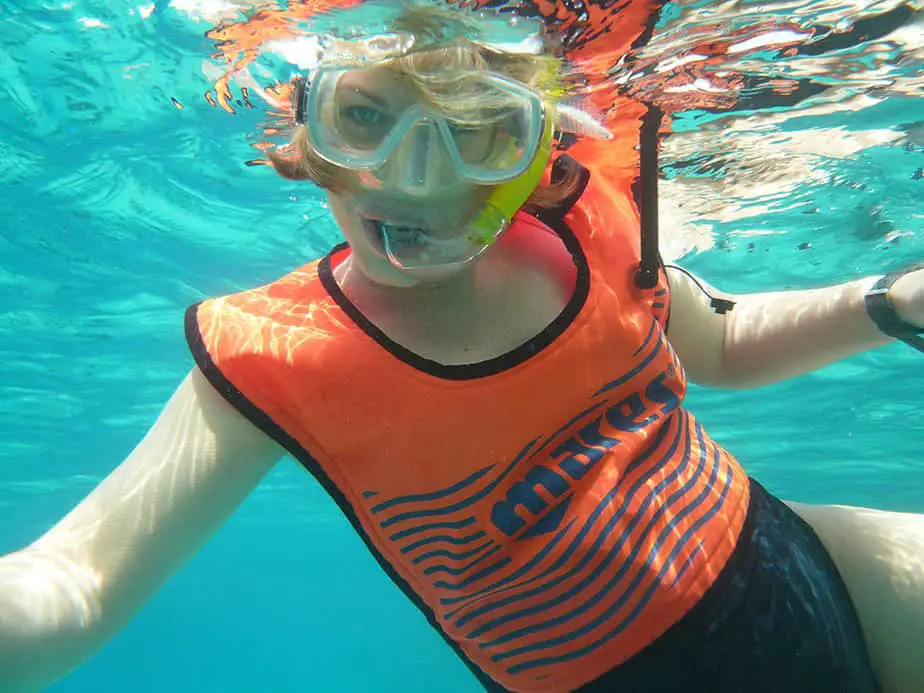
Staying calm is one of the most important things you can do while snorkeling. Another way of phrasing it is: don’t panic. Panic is what can lead to accidents. For instance, when a newbie chokes on water through their snorkel for the first time, or water enters their mask, they flail around wildly, wasting precious energy and oxygen. If you stay calm, you know that the solution is to simply bring your body into a vertical position and take off your mask or snorkel.
Furthermore, the calmer you are, the better you can conserve your energy, stay afloat, and enjoy the experience. Unfortunately, this is easier said than done if you happen to be a non-swimmer.
Snorkeling as part of a boat tour does wonders for making you feel calm. You are surrounded by people, wearing a life jacket, and being helped by the guide and other crew members. Once you feel how effortless it is to float with a life jacket helping you, your fears will dissipate and you will have a great time.
It’s much easier to stay calm if you have some experience with what to do. For instance, if you have some ability to swim, you will feel much more capable. If you have had the chance to test out snorkel equipment in a shallow pool, then you will be much more confident when using them during the real thing.
Additionally, if you’ve ever panicked before, you know the advice to calm down is to take deep, slow breaths and try to get your heart rate down. Well, this just so happens to be how you’re supposed to breathe through a snorkel or a scuba regulator anyways. It’s the most efficient for optimal air flow, and it also happens to be quite relaxing.
So, take deep, slow breaths, stay near others, wear a flotation device, and try to stay calm. If anything unexpected happens, others nearby will bail you out. That should hopefully give you the peace of mind to stay calm and enjoy the experience.
Do what’s comfortable for you
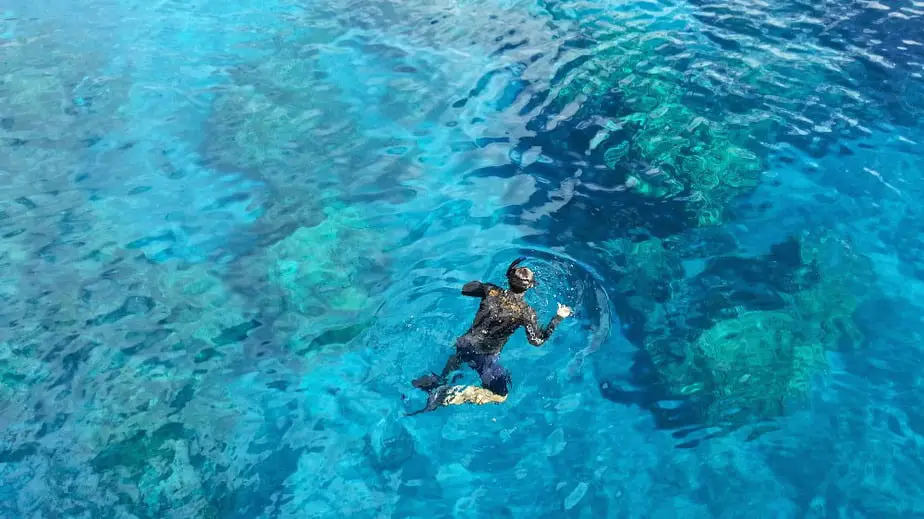
There’s a lot of information floating around on the internet, and we are adding ours into the mix. Regardless, whether you are reading articles online or talking about snorkeling tips in person, you will almost certainly get different tips from each person. Everyone has their opinion on the best way of doing things.
The people whose opinions you should value the most are the ones given by the instructor/guide during the trip. It’s likely that the other people on the tour are as inexperienced as you are, so don’t take anybody’s expertise at face value unless you know they are qualified or experienced. Also, even if you receive good advice, it does not mean that you are following it correctly.
For instance, here’s a personal story. No matter who you are, at some point your mask will fog up or some water will leak in. The (correct) advice I was given was to clear the mask occasionally. The concept was that I would lift the mask up just a bit from the bottom, let some water enter to rinse the lenses, and I then forcefully exhale through my nose to blast out the water. All of this should be done in a swift motion while I remained horizontal.
However, due to my inexperience at the time I wasn’t prepared to do this, and so when I lifted the mask up from the bottom, too much water rushed in, completely flooding the mask and water even entered my nose. I had to quickly surface because it felt like I waterboarded myself. The advice I was given wasn’t bad, I just executed it poorly.
When you’re just starting out, it can be hard to distinguish between good and bad advice, however if the advice was given by a guide/instructor, then it is probably reliable. You might still struggle as I did. So what you should do is do what’s comfortable for you, even if it is not as efficient or inconvenient.
If you are struggling to clear your mask, for instance, then just go to a vertical position, completely remove your mask, and do it the slow way. At least you won’t end up with nostrils full of water. Don’t feel pressured to do something that you feel uncomfortable doing.
It’s okay to fail and to not do everything perfectly the first few times you snorkel. However, the best guide will be your gut instinct. What works for someone else might not work for you. Until you gain more experience and improve your technique, we recommend erring on the side of caution. Snorkeling is still fun regardless.
Pay attention to your surroundings
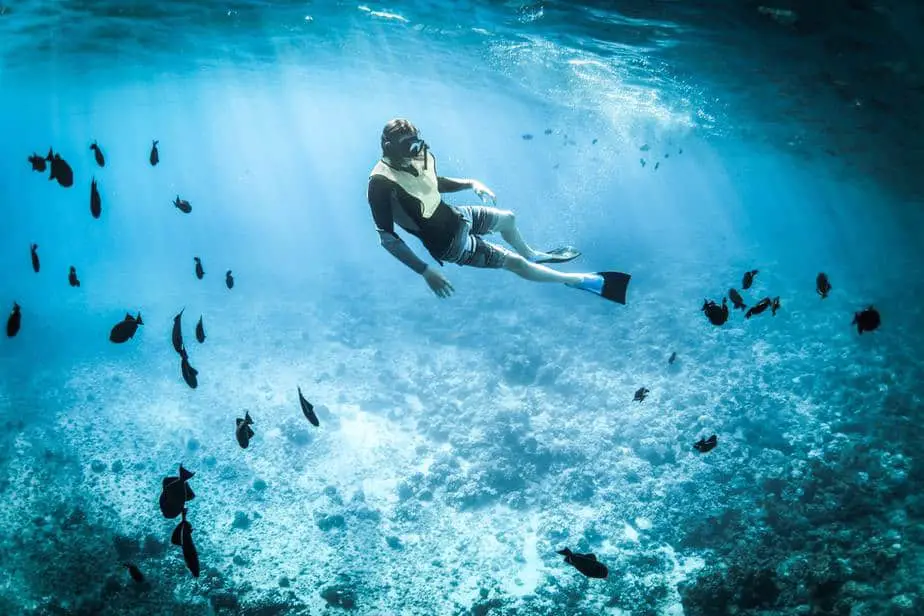
The ocean is unforgiving. It doesn’t matter if you’re sailing, swimming, diving, or snorkeling; any activity done in the water has a very real risk of drowning. Many of the dangers associated with being in the water can easily be prevented by wearing a life jacket and staying in a group.
Unfortunately, a common mistake first time snorkelers make is that they get too engrossed with their underwater sightseeing, and they don’t look around them enough, that they slowly drift away from the group where they are vulnerable to sudden changes in the waves.
As awe-inspiring as the underwater world is, you must remember to look around you every minute or so. Pay attention to where your fellow snorkelers are and do not stray too far from the group or the boat.
You should also be paying attention to possible dangers. For instance, maybe the weather is quickly changing and the waves are starting to increase in size. You do not want to wait until you’re getting buffeted by large waves before you realize you strayed far away from the group and are a distance away from the boat.
It’s also your duty to ensure that you are not a threat to marine life. Remember that you are a visitor to their home. Their delicate, beautiful ecosystem should be left alone as much as possible. Unfortunately, tourism has been quite harmful to coral reefs from people not wearing reef-safe sunscreen to people carelessly coming into contact with the delicate corals.
You’ll see signs saying this, and your guide will tell you this too: look, but don’t touch. It’s really tempting to reach out and pet a fish or to snap a branch off a coral reef to keep as a souvenir. In protected waters, the aquatic life are used to humans because they are often fed by them, but no matter what, do not reach out your hand to touch them.
Many fish are prey animals. They can get alarmed easily if something much larger than them reaches out to grab them. If they feel threatened or cornered, they may retaliate in self-defense by biting or stinging you. Many underwater creatures are venomous or have sharp teeth that can puncture a wetsuit, so this is not something you want to test.
Be extremely careful where you are kicking your fins and your proximity to wildlife and other divers. Try not to tread on any fish, corals, or anemones. As small as these actions may seem, they add up. Imagine how many millions of visitors go snorkeling each year; if they each cause a little bit of damage, it can really add up.
By paying attention to your surroundings, you protect not only yourself, but the aquatic life as well. That way, you can get the awesome experience of enjoying snorkeling in a sustainable way so that the environment is preserved in the long run. Treat the ecosystem with the same respect you’d treat the house of a good friend who has warmly invited you to come visit.
Parting words
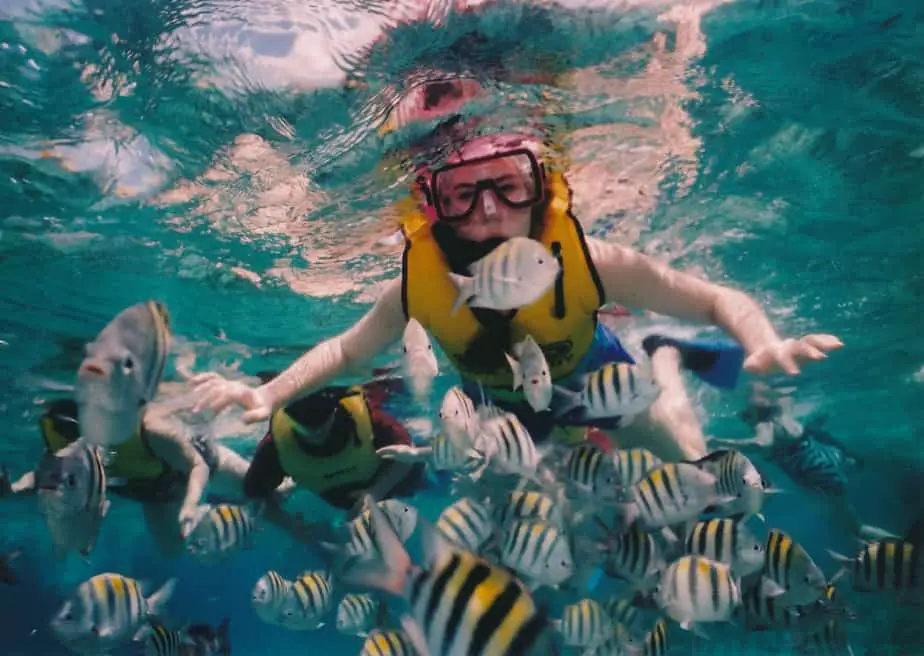
Staying safe while snorkeling involves wearing a personal flotation device, knowing how to use your equipment, keeping your hands to yourself, staying with a group and near the boat, and using some common sense.
As a non-swimmer, you can do all of these things. Being a strong swimmer with a fit body is optional, but highly recommended. Knowing even a little bit about swimming can improve your safety and enjoyment.
If you want to snorkel, do not let something like age or inexperience hold you back. You’ll be surprised at the wide variety of people that you’ll meet on a snorkel tour; people of all shapes, sizes, and ages have tried it out safely and had a blast doing it.
It would be more upsetting if you didn’t go, citing some excuse that ultimately doesn’t matter. The regret will suck and, as you’ll hopefully find out, snorkeling is much easier than you think and not intimidating at all once you know the basics.
So go on, we urge you to give it a try. Book a trip to Hawaii and visit Maui or Kauai. Or maybe you would rather visit the land down under, Australia, to snorkel in their world-renowned Great Barrier Reef? Heck, you can even go snorkeling in Sardinia, Italy, where they have some of the most pristine waters in the entire world.
There are so many beautiful locations you can visit that offer snorkeling tours. Going with a tour is probably the best way you can safely enjoy snorkeling as a non-swimmer because the guided experience ensures that you are always looked after. You’ll also get access to snorkeling sites you otherwise wouldn’t be able to reach alone. After you’ve done a few of these, then you will know how to snorkel on your own like a pro.

